Exploring Glomerular Malfunction and Its Health Impacts
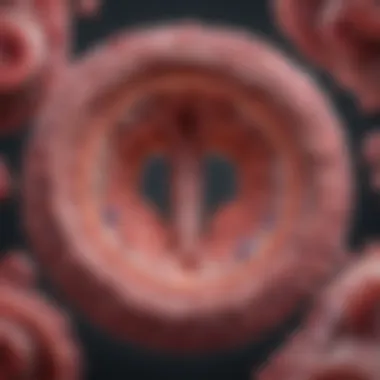

Intro
Glomerular malfunction often weaves an intricate web of health complications that can affect various bodily systems. To the uninitiated, it may simply seem like a kidney issue, but the reality is much more layered. Understanding the unaffiliated functions within the body involves looking beyond just the kidneys, as these small structures play a monumental role in filtering blood, regulating blood pressure, and maintaining overall fluid balance.
As we navigate through this topic, we will uncover the fundamental elements behind glomerular dysfunction, looking into the causes, clinical manifestations, and potential management approaches. The glomeruli, the tiny filters in the kidneys, serve as gatekeepers for waste elimination and nutrient conservation. Any hiccup in their functioning can lead to a cascade of health issues, making it imperative to grasp not just the hows but also the whys surrounding these malfunctions.
Let’s embark on this exploration and glean insights into the implications of glomerular malfunction on renal health and beyond.
Understanding Glomerular Function
Grasping the finer points of glomerular function is not only crucial for understanding kidney health but also for broader implications regarding human physiology. The glomeruli, tiny structures nestled within the kidneys, function as vital filtration units. They play a key role in removing waste and excess substances from the blood. Any disruption in their processes can set off a cascading effect, affecting overall health.
The importance of comprehending glomerular function extends beyond just academic curiosity. Students, researchers, and healthcare professionals stand to benefit from a sound understanding of these functions. For instance, recognizing the factors that can impair filtration helps in diagnosing and managing renal diseases effectively.
Anatomy of the Glomeruli
The anatomy of the glomeruli resembles a complex network of capillaries bundled together. This intricate structure is designed specifically for filtration. Each glomerulus is encased by a thin capsule known as Bowman's capsule, which collects the filtration products.
When blood flows through the glomeruli, a series of events unfolds:
- High Pressure: The blood enters through the afferent arteriole and exits via the efferent arteriole, creating a pressure gradient that facilitates filtration.
- Selective Permeability: The glomerular filtration barrier consists of three layers—endothelium, basement membrane, and podocytes. This layered structure allows water, ions, and small molecules to pass while keeping larger proteins and blood cells in circulation.
- Regenerative Capacity: Glomeruli have the ability to adapt and regenerate, although this capacity diminishes with chronic injury or disease.
By studying the anatomy of the glomeruli, we gain insights into how their structural integrity can impact their function. Any deviations may hinder their capacity to clear waste products, leading one to the grim realities of renal dysfunction.
Physiology of Filtration
The physiology of filtration emphasizes how mechanical and biochemical processes work hand-in-hand. Once blood enters the glomeruli, the dynamics of filtration begin.
- Filtration Pressure: Due to the differences in hydrostatic and osmotic pressures, there is a driving force that pushes fluid from the blood into Bowman's capsule. This pressure is crucial and directly influences the glomerular filtration rate (GFR).
- GFR Importance: The GFR is a vital metric in assessing renal function. It measures how much blood is filtered every minute and allows practitioners to estimate how well the kidneys are working. A declining GFR often signals a need for intervention.
- Reabsorption and Secretion: Post-filtration, the renal tubules fine-tune the composition of urine. Nutrients like glucose are often reabsorbed, while waste products are secreted into the filtrate. This delicate balance is paramount for maintaining homeostasis in the body.
Understanding the physiology of filtration not only aids in a better grasp of renal function but also sheds light on potential interventions in cases of glomerular malfunction.
In essence, a holistic understanding of glomerular anatomy and physiology serves as a foundation for recognizing the interplay between renal health and systemic well-being.
Types of Glomerular Malfunction
Understanding the various types of glomerular malfunction is crucial for grasping the full scope of kidney health and disease. Each type arises from distinct mechanisms and presents unique clinical features. The implications of these conditions can significantly alter a patient's quality of life and longevity. Identifying these malfunctions not only aids in diagnosis but also shapes treatment approaches. Therefore, it’s imperative for students, researchers, and healthcare professionals to appreciate the nuances of these conditions as they navigate the intricate world of nephrology.
Nephrotic Syndrome
Nephrotic syndrome is characterized by a triad of clinical features: significant proteinuria, hypoalbuminemia, and edema. When the glomeruli become overly permeable, they allow large amounts of protein, particularly albumin, to seep into the urine. This loss of protein can drag down the serum albumin levels, leading to fluid retention and swelling, often found in the face, abdomen, and lower limbs.
The pathophysiology of nephrotic syndrome is complex and can be triggered by various underlying conditions such as minimal change disease, diabetic nephropathy, and focal segmental glomerulosclerosis. Each of these conditions can initiate distinct inflammatory pathways that contribute to increased glomerular permeability. Additionally, nephrotic syndrome is often accompanied by hyperlipidemia, where cholesterol levels rise as the body attempts to compensate for lost proteins.
"Nephrotic syndrome not only complicates renal function but can also have systemic consequences, impacting cardiovascular health due to its correlation with elevated cholesterol levels."
The management of nephrotic syndrome may include corticosteroids, immunosuppressants, and lifestyle modifications. Addressing the underlying cause is critical to mitigate symptoms and avoid long-term complications. Regular monitoring of kidney function and protein levels helps tailor treatment and improve outcomes.
Nephritic Syndrome
In contrast to nephrotic syndrome, nephritic syndrome typically presents with hematuria, oliguria, and hypertension. It reflects a more inflammatory process affecting the glomeruli. The distinguishing feature of nephritic syndrome is the presence of red blood cells and casts in the urine, indicating damage to the glomerular structure.
Conditions such as post-infectious glomerulonephritis, IgA nephropathy, and lupus nephritis fall under this category. The inflammatory responses can lead to a decrease in the glomerular filtration rate, with patients often exhibiting signs of renal failure or acute kidney injury.
The management primarily focuses on controlling the underlying inflammation, often requiring the use of corticosteroids and sometimes additional immunosuppressive agents. Patients must be monitored closely for blood pressure and renal function, as both can fluctuate considerably during the course of the disease.
Glomerulosclerosis
Glomerulosclerosis is a term describing the scarring of the glomeruli, which can occur as a result of various chronic kidney diseases. It manifests through a gradual decline in kidney function as healthy nephrons become replaced by scar tissue. This can majorly impair filtration and lead to both nephrotic and nephritic features.
Several conditions can induce glomerulosclerosis, including uncontrolled diabetes and prolonged hypertension. The damage often progresses silently, making early detection paramount. Risk factors such as obesity, a sedentary lifestyle, and poor diet can exacerbate the condition, leading to significant health challenges.
Management strategies typically include controlling blood sugar levels in diabetic patients, managing hypertension, and addressing any contributors to kidney damage. Early intervention can slow disease progression and possibly preserve kidney function, highlighting the importance of regular health check-ups and lifestyle modifications.
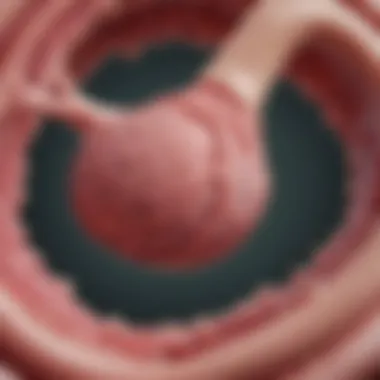
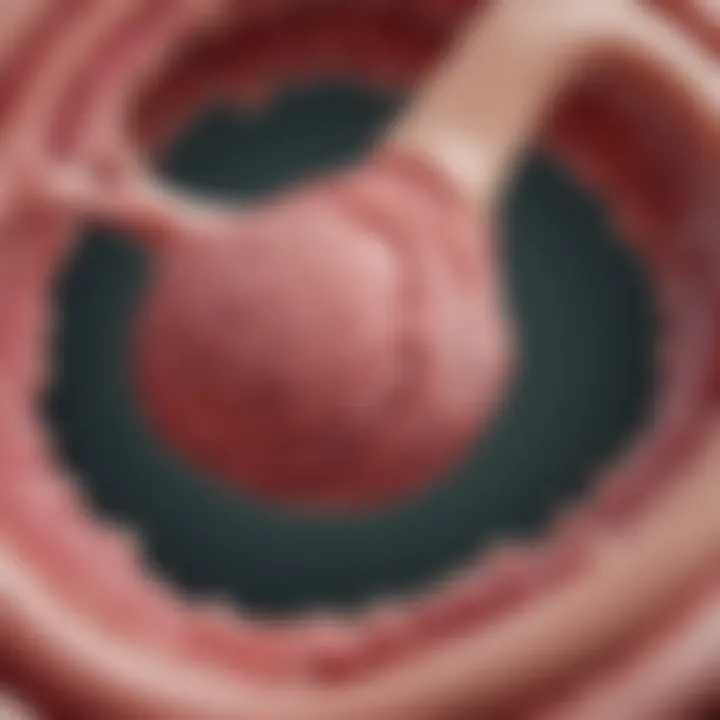
Understanding these types of glomerular malfunction paves the way for early diagnosis and more effective treatment strategies. The complexities and interrelation of these conditions underscore the importance of a thorough understanding of glomerular health.
Etiology of Glomerular Malfunction
Understanding the etiology of glomerular malfunction is essential in grasping how various factors can disrupt kidney function. This section delves into the roots of dysfunction in glomeruli, shedding light on the interplay between genetic predispositions, environmental triggers, and infectious agents. Recognizing these underlying causes guides clinicians and researchers alike in devising targeted interventions and preventative strategies. Thus, a comprehensive look at etiology is not merely academic; it has profound implications for patient care and future research directions.
Genetic Factors
When exploring glomerular malfunction, one cannot overlook the significance of genetic factors that play a pivotal role. Genetic mutations can predispose individuals to various kidney diseases, influencing the glomeruli's structure and function. For instance, researchers have identified specific gene variants associated with conditions like Alport syndrome and focal segmental glomerulosclerosis. These genetic anomalies can lead to abnormal protein production, causing damage to the kidney’s filtration barrier.
Moreover, family history should raise a red flag. Individuals with a family background of kidney disease face a markedly higher risk themselves. Modern techniques such as gene mapping are becoming invaluable for early identification and intervention, potentially staving off more severe complications. It's quite clear that encapsulating genetic influences offers crucial insight into predicting and managing glomerular diseases.
Environmental Influences
The environment shapes our health in multifaceted ways. Several external factors can trigger or exacerbate glomerular malfunction, leading to dire consequences for renal function. One notable aspect is exposure to toxins. Everyday substances, whether from occupational hazards or pollutants, can inflict silent harm on the delicate structures of the kidneys.
Additionally, lifestyle choices play a critical role. High salt consumption and obesity, for instance, can lead to hypertension, which exerts pressure on the glomeruli, potentially leading to chronic damage. Dietary patterns rich in processed foods also carry their share of risk; let's not forget how the western diet is increasingly linked to declining kidney health. Even stress, often underestimated, can affect hormones that manipulate the body’s filtration processes.
Recognizing these environmental contributors can help motivate lifestyle changes that may mitigate risks, offering a proactive approach in the battle against kidney dysfunction.
Infectious Agents
Infections can also emerge as serious culprits in the realm of glomerular malfunction. Certain pathogens can invade kidney tissues, igniting inflammatory responses that take a toll on glomeruli. Among them, Streptococcus bacteria are notorious for causing post-streptococcal glomerulonephritis, a condition that can arise after infections like strep throat.
Beyond bacteria, viruses like HIV can lead to a range of kidney complications, including collapsing glomerulopathy. Here, the virus may cause changes that compromise the kidney’s ability to filter waste effectively. Parasitic infections, though less common, also add complexity to the conversation surrounding glomerular health.
Understanding the array of infectious agents allows healthcare providers to identify potential risks early in vulnerable populations, paving the way for timely interventions and reducing long-term renal damage.
"The complexity of glomerular malfunction requires nuanced understanding of its etiology, highlighting the importance of an integrated approach that encompasses genetic, environmental, and infectious perspectives."
In summary, the etiology of glomerular malfunction lays the foundation for deeper exploration into its management and treatment. Recognizing the interaction among genetic factors, environmental influences, and infectious agents opens new avenues for research and clinical practice, ultimately guiding patient care towards more effective and personalized strategies.
Pathophysiology of Glomerular Dysfunction
The pathophysiology of glomerular dysfunction is a critical aspect that cannot be overlooked in discussions about renal health. It sheds light on how the glomeruli, the small bundles of capillaries vital for filtration, fall victim to various forms of injury, leading to complex health conditions. Understanding these mechanisms is not merely academic; it fosters better diagnosis, management, and outcomes for patients grappling with kidney-related issues. Given the intricate relationship between glomerular function and systemic health, this topic bears great significance for students, researchers, educators, and professionals alike.
Mechanisms of Injury
Injury to the glomeruli can occur through multiple avenues. It’s not always straightforward; sometimes, these pathways overlap, creating a more complicated picture. Here are some prominent mechanisms:
- Immune-mediated injury: The body’s own immune response can mistakenly target glomerular structures, leading to conditions such as lupus nephritis. This autoimmune attack can provoke significant inflammation and damage.
- Hemodynamic changes: Abnormalities in blood flow — whether high or low blood pressure — can impose stress on glomerular capillaries. Over time, these pressures can result in either hypertrophy of the glomeruli or, conversely, atrophy, ultimately impairing filtration capabilities.
- Metabolic alterations: Uncontrolled diabetes can wreak havoc on kidney function, primarily through the accumulation of advanced glycation end-products (AGEs). These substances can induce cellular stress in glomerular cells, leading to dysfunction.
This circumstance is often compounded by comorbidities like hypertension, further increasing the likelihood of significant injury. In sum, mechanisms of injury are multifaceted, and recognizing these pathways is vital for effective patient care.
Inflammatory Responses
Inflammation serves as a double-edged sword in glomerular dysfunction. On one hand, it acts as the body’s defense mechanism against injury or infection; on the other hand, it can contribute to ongoing damage if left unchecked.
- Cytokine release: Once injury occurs, various cytokines and chemokines are released, drawing immune cells to the site of injury. This influx can lead to a vicious cycle of ongoing inflammation that perpetuates glomerular dysfunction.
- Complement activation: The complement system, part of the immune response, also plays a significant role in this process. When activated, it can lead to further cell damage and inflammation, manifesting in conditions like membranoproliferative glomerulonephritis.
"It's like tossing a match into a gas canister; the initial spark causes an explosion of inflammation that can only be contained through targeted therapies."
Controlling this inflammatory response is essential. Therapeutic strategies that target these pathways can not only alleviate symptoms but also provide a more favorable long-term outlook for patients. Those in the medical and research fields must pay heed to these inflammatory dynamics to refine treatment approaches effectively.
Clinical Manifestations
Understanding the clinical manifestations of glomerular malfunction is key to unlocking the complexity of renal health. These manifestations serve as telltale signs that guide healthcare professionals and patients alike in discovery and treatment pathways. Glomerular malfunctions can lead to a series of physical symptoms that vary in severity and can greatly affect one's quality of life.
Edema and Fluid Retention
Edema, often marked by swelling in various parts of the body, is a central symptom associated with glomerular dysfunction. This occurs due to the kidneys' inability to filter out excess fluid and sodium. The result? Fluid accumulates in tissues, causing the familiar puffiness.
- Types of Edema: Generally, it can show up in the ankles and feet or manifest as generalized swelling. This usually indicates the severity and extent of fluid retention.
- Pathophysiology: The malfunctioning glomeruli fail to regulate the balance of electrolytes, often leading to a hypoproteinemic state. This means there’s a lower concentration of proteins in the blood, which exacerbates fluid leaks from the bloodstream into surrounding tissues.
In a worst-case scenario, such swelling might not just be uncomfortable; it can also lead to complications like decreased mobility or even skin infections. Therefore, monitoring for edema is crucial for identifying the progression of renal impairment, making it an important focal point in managing glomerular diseases.
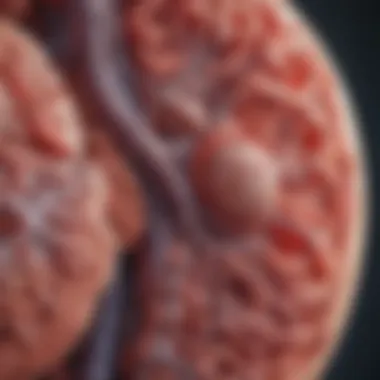
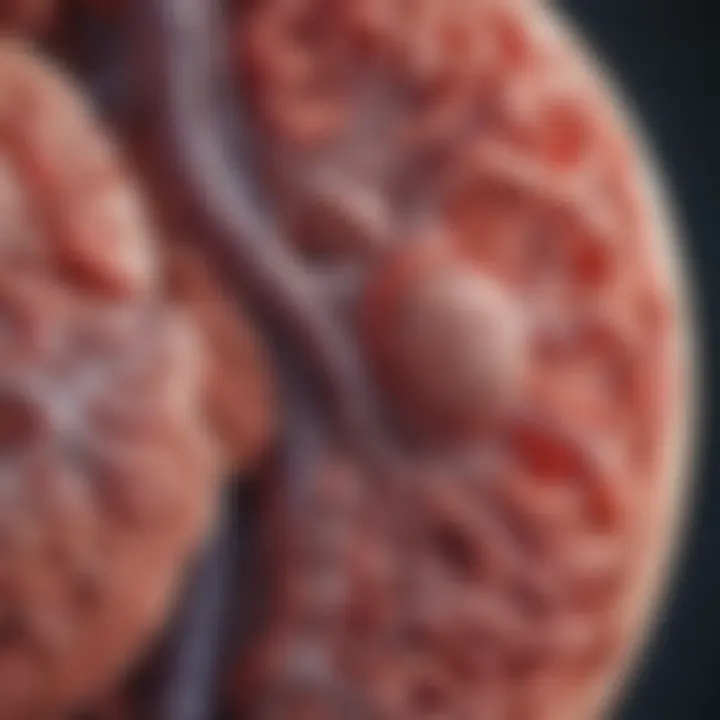
Alterations in Urine Composition
When the glomeruli don’t function properly, the composition of urine undergoes alterations that can reveal much about a patient's kidney health. Common changes include:
- Proteinuria: Protein leaks into urine, indicating glomerular injury. This is generally monitored through a urine dipstick test. If large amounts of proteins are found, it can point towards nephrotic syndrome or severe renal impairment.
- Hematuria: Presence of blood in urine often signifies glomerular inflammation. This could be due to conditions like nephritic syndrome.
- Changes in Specific Gravity: A low specific gravity might demonstrate the kidneys’ reduced efficiency in concentrating urine, a concern in patients with chronic glomerular disease.
Examination of one’s urine can offer a window into kidney issues, serving as an invaluable diagnostic tool. Urinalysis not only guides treatment decisions but also reflects changes in disease progression and response to therapies.
Systemic Implications
The complications stemming from glomerular malfunctions extend beyond renal health. As the filers of the blood, glomeruli impact systemic physiology in several ways:
- Hypertension: Fluid retention and hormonal imbalances can lead to elevated blood pressure. This creates a vicious cycle; if left unchecked, hypertension can further damage renal function.
- Electrolyte Imbalances: Imbalances in potassium and calcium can arise from improper filtration and lead to cardiac or neurological issues.
- Anemia: The kidneys play a role in producing erythropoietin, a hormone that stimulates red blood cell production. Dysfunction can result in anemia, complicating conditions such as chronic kidney disease.
In essence, the implications of glomerular malfunction are not confined to the kidneys. The interconnectedness of bodily systems means that changes in renal function can seep into cardiovascular health, muscular function, and even hormonal homeostasis.
In summary, the manifestations of glomerular malfunction are multifaceted, involving aspects of fluid balance, urine characteristics, and systemic health. Recognizing these signs early on plays an essential role in diagnosis and management, ensuring better health outcomes for affected individuals.
Diagnosis of Glomerular Malfunction
Diagnosing glomerular malfunction requires careful thought and a systematic approach. It serves as a crucial element in determining the health of a patient’s kidneys. With the multitude of potential causes behind glomerular dysfunction, pinpointing the condition relies heavily on precise and accurate diagnostic techniques. Identifying issues early can significantly influence the management and treatment options available, ultimately improving patient outcomes.
Laboratory Evaluations
Laboratory evaluations form the backbone of diagnosing glomerular malfunction. They are paramount in identifying abnormal substances in the blood and urine that indicate kidney dysfunction.
- Urinalysis: This is often the first port of call. A urinalysis can uncover signs of proteinuria, hematuria, or other anomalies that signal a glomerular issue. Detecting excessive protein is indicative of Nephrotic Syndrome, for instance.
- Blood tests: These tests help assess kidney function through parameters such as serum creatinine and blood urea nitrogen levels. Elevated levels might suggest a significant decline in glomerular function.
- Electrolyte levels: Evaluating sodium, potassium, and phosphorus can provide clues about renal handling of these ions, which might be altered in glomerular conditions.
What’s fascinating is how laboratory findings can paint a broader picture of a patient's overall health. For instance, elevated cholesterol in a proteinuric patient can suggest a hyperlipidemic state resultant from glomerular damage.
Imaging Techniques
Imaging techniques complement laboratory evaluations by offering visual insights into kidney morphology and any underlying structural issues. Understanding the physical state of the glomeruli and surrounding tissues is vital for diagnosis.
- Ultrasound: A non-invasive and accessible option, ultrasound can help identify any enlargement in the kidneys or abnormalities in the renal structure. For example, glomerulosclerosis can sometimes be visualized as changes in kidney size or texture.
- CT/MRI scans: These provide detailed images and can be beneficial for examining complex cases where anatomical anomalies need closer scrutiny. For example, an MRI can help differentiate between glomerular and extraglomerular pathologies with high precision.
- Radionuclide scanning: Occasionally used, it can give functional insights, detailing how well the kidneys are working. This can help gauge overall kidney function in a more dynamic way.
Biopsy Considerations
While laboratory tests and imaging provide significant insight, kidney biopsy often stands as the gold standard for diagnosing glomerular dysfunction. This procedure involves taking a small tissue sample from the kidney, which can then be examined microscopically.
- Indications for biopsy: Commonly indicated when diagnosis remains uncertain after non-invasive tests, or when a specific pathology must be confirmed. Nephrotic syndrome or acute nephritis might warrant a biopsy for definitive diagnosis.
- Procedural aspects: The biopsy can be performed percutaneously or via open surgery, depending on the situation and the healthcare provider’s judgment. Post-procedural care is also vital since patients may face complications like bleeding or infection.
- Pathological findings: Histological evaluation can reveal crucial details regarding the type and mechanism of glomerular injury. For instance, it can differentiate between minimal change disease and focal segmental glomerulosclerosis, both of which require different management approaches.
It’s essential that every aspect of the diagnosis is approached comprehensively. A well-informed diagnosis not only leads to effective treatment options but also improves understanding of the disease progression, enabling tailored healthcare strategies.
In summary, the diagnosis of glomerular malfunction involves integrated efforts across laboratory evaluations, imaging techniques, and, when needed, biopsy considerations. Each element is significant in crafting a clear diagnosis, allowing healthcare professionals to navigate the complex landscape of kidney disorders with clarity and efficacy.
Management Approaches
In tackling glomerular malfunctions, it's crucial to understand that effective management can often mean the difference between a full recovery and long-term complications. The approach to management is decidedly multifaceted, as it involves not only pharmacological strategies but also lifestyle changes and, in some severe cases, renal replacement therapies. Each component plays a critical role in maximizing kidney function and alleviating symptoms, thus improving the overall quality of life for affected individuals.
Pharmacological Interventions
Pharmacological interventions are often the frontline defense against glomerular malfunctions. Medications can help manage symptoms, control underlying conditions, and prevent further renal damage. For instance, medications like corticosteroids are frequently used in conditions such as nephrotic syndrome to reduce inflammation and proteinuria.
Other classes of drugs, such as angiotensin-converting enzyme (ACE) inhibitors, can improve kidney function by lowering blood pressure and reducing the strain on remaining nephrons. It's also worth noting that immunosuppressants may be necessary when an autoimmune component is involved, particularly in cases like minimal change disease. Regular monitoring of drug efficacy and potential side-effects is essential, as optimal dosages can vary significantly between patients.
Lifestyle Modifications
Lifestyle modifications can't be stressed enough in the comprehensive management of glomerular dysfunction. These changes often work hand in glove with pharmacological treatments to enhance outcomes. A balanced diet, for instance, can be a game changer. Reducing sodium intake can help manage blood pressure and fluid retention, while controlling protein intake is essential to minimize strain on the kidneys. Patients are often advised to adopt a low-protein diet, unless medical advice suggests otherwise.
Regular physical activity can also bolster kidney health. Engaging in moderate exercise—like brisk walking—can help maintain a healthy weight, which is key in alleviating additional strain on the kidneys. Furthermore, maintaining proper hydration is pivotal, as it assists in waste elimination and supports kidney function. Educating patients on managing stress through relaxation techniques, or even simple mindfulness practices, can further contribute to overall wellness.
Renal Replacement Therapies
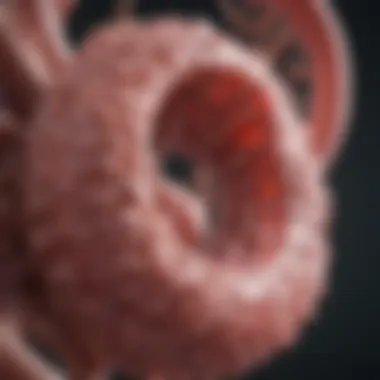
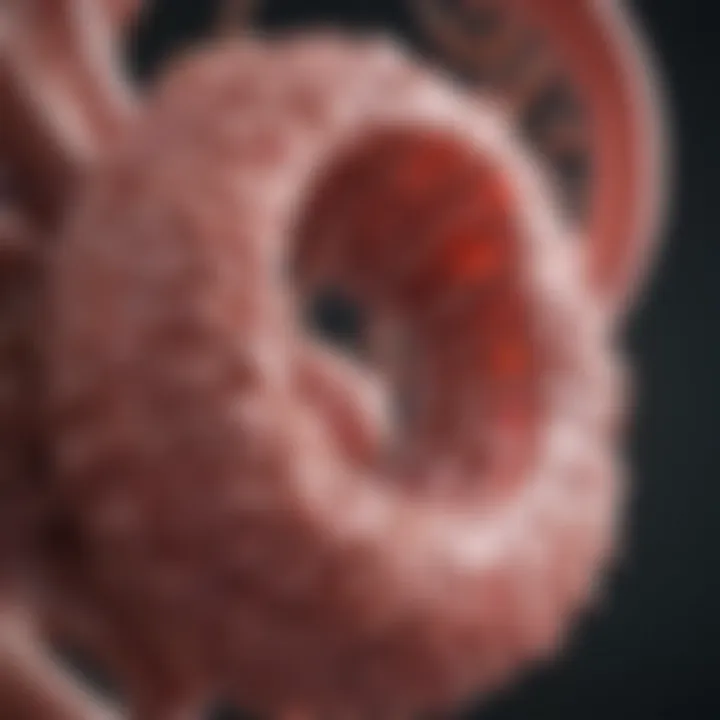
In cases where the glomerular damage is severe, renal replacement therapies may become necessary. These therapies—dialysis and kidney transplantation—serve as vital options for managing end-stage renal disease. Dialysis, both hemodialysis and peritoneal dialysis, acts as an artificial means of filtering waste from the blood when the kidneys can no longer perform this function adequately.
Kidney transplantation is often seen as the most definitive treatment. A successful transplant can restore normal kidney function, but it often requires lifelong immunosuppressive medication to prevent organ rejection. This emphasis on balancing the risks and benefits—such as the need for ongoing medical supervision and potential complications from immunosuppression—demands thorough patient education.
In summary, management approaches for glomerular malfunction need to be comprehensive, combining medical interventions, lifestyle changes, and, when necessary, renal replacement options to ensure optimal outcomes. By tailoring the management plan to the individual needs of the patient, healthcare professionals can help mitigate complications and foster a better quality of life.
Prognosis and Long-Term Outcomes
Understanding the prognosis and long-term outcomes of glomerular malfunction is crucial for both patients and healthcare providers. This knowledge plays a pivotal role in shaping treatment plans, monitoring disease progression, and offering realistic expectations about recovery or decline.
Predictors of Recovery
When evaluating a patient's potential for recovery, several factors come into play. These predictors can vary widely, but some common elements include:
- Age: Younger patients generally have better recovery prospects compared to older individuals. The body’s ability to regenerate and adapt often diminishes with age.
- Type of underlying condition: Different types of glomerular dysfunctions—like nephrotic syndrome or acute glomerulonephritis—can influence recovery rates. For instance, individuals with acute conditions may experience a higher chance of full recovery than those facing chronic issues.
- Response to Initial Treatment: Early and effective interventions can dramatically improve outcomes. If a patient responds well to initial pharmacological treatments or lifestyle changes, this often correlates with a more favorable long-term prognosis.
- Biopsy Findings: Histological evaluations can provide insight into the severity of damage and potential for recovery. Certain patterns observed in renal biopsies, such as the extent of inflammation or fibrosis, can indicate likelihood of recovery.
"The prognosis in glomerular diseases is often influenced by a combination of clinical, histological, and molecular factors. Understanding these can help tailor more individualized treatment strategies."
Chronic Kidney Disease Progression
Chronic kidney disease (CKD) represents a significant risk for individuals with glomerular malfunction. The transition from initial dysfunction to chronic disease can present various challenges:
- Stage of CKD: The prognosis heavily depends on the stage at diagnosis. Early-stage CKD is frequently more manageable, allowing for interventions that slow progression. Once advanced stages are reached, treatment options may become limited, and the focus can shift to maintaining quality of life.
- Comorbid conditions: Factors such as diabetes and hypertension can complicate management and exacerbate kidney damage. These conditions often necessitate a more aggressive approach to treatment to mitigate their impact on renal function.
- Monitoring and Lifestyle Adjustments: Regular monitoring of kidney function and adherence to lifestyle changes can significantly alter the trajectory of CKD. Patients who actively manage dietary intake, maintain a healthy weight, and manage blood pressure show better long-term outcomes.
- Dialysis and Transplantation Options: For some patients, progression leads to the need for renal replacement therapies. Understanding the candidacy for dialysis or transplantation becomes essential as it impacts long-term survival and quality of life assessments.
Research and Future Directions
Exploring glomerular malfunction isn't just a hiccup in renal study; it's a key issue that can reshape the entire understanding of kidney health and disease management. As the landscape of renal research shifts, focusing on new therapies and diagnostic tools showcases the unlapped potential emerging from scientific inquiry.
Emerging Therapies
Researching therapies for glomerular dysfunction presents countless avenues ripe for investigation. The future could see therapies forged in gene editing, like CRISPR-Cas9, being used to rectify genetic predispositions that lead to glomerular damage. For instance, treatments targeting specific pathways, such as the renin-angiotensin system, could mitigate long-term injury by addressing hypertension at its roots. Furthermore, targeting inflammation with monoclonal antibodies is gaining traction. These therapies aim to inhibit the inflammatory cascades that wreak havoc within glomerular structures, potentially slowing or reversing damage.
Another promising aspect is the role of regenerative medicine. Utilizing stem cells to promote tissue repair in kidneys could provide a groundbreaking shift in how chronic kidney diseases progress. In this approach, the body’s own cells could be harnessed to rejuvenate damaged glomeruli, perhaps transforming an otherwise grim prognosis into one of hope.
Benefits of Emerging Therapies:
- Potential for Personalized Treatment: Therapies tailored to individual genetic makeups.
- Improved Quality of Life: Lower morbidity and better renal function preservation.
- Expanded Understanding of Renal Pathophysiology: Each therapy fosters deeper insights into kidney mechanisms.
Clinical trials for emerging therapies are critical, as they not only test effectiveness but also unveil side effects that may not be apparent in initial studies.
Innovative Diagnostic Tools
When it comes to diagnosis, techniques have made profound leaps thanks to advancements in technology. Envision a future where biomarkers effectively signal the onset of glomerular dysfunction long before symptoms arise, shifting the focus from reactive to proactive healthcare. Laboratory tests analyzing urine and blood for specific proteins or genetic markers can provide invaluable insights into kidney health.
Utilization of imaging technologies also holds promise. Non-invasive, high-resolution imaging can now discern structural changes in the glomeruli, facilitating early detection of diseases. For example, magnetic resonance imaging (MRI) may offer resolutions adequate to visualize even minute alterations in kidney architecture, which would be unattainable with conventional imaging methods.
Moreover, leveraging artificial intelligence in pathology can streamline the evaluation of biopsy samples. AI algorithms could sift through thousands of images rapidly, identifying subtle patterns that could indicate disease progression or remission in real time.
Considerations for Innovative Diagnostic Tools:
- Cost-effectiveness: Assessing whether high-tech tools yield savings in long-term treatment costs.
- Accessibility: Ensuring that cutting-edge tools are available in clinical settings worldwide.
- Training and Implementation: Developing protocols for healthcare professionals to utilize and interpret these technologies effectively.
Patient Education and Support
Understanding glomerular malfunction in depth goes beyond clinical knowledge; it's crucially important to equip patients and their families with the information they need. Patient education serves to demystify the complexities of kidney health, breaking down how the glomeruli function and what happens when they're impaired. The key is that informed patients are more likely to engage in their treatment and make lifestyle choices that promote their wellbeing. Since kidney health directly connects with overall health, empowering patients with knowledge leads to better self-management and, ultimately, improved outcomes.
Information Dissemination
Information flow is the backbone of effective patient education. Techniques to disseminate relevant data must be diverse, catering to differing learning preferences. This means providing written informational materials, engaging videos, interactive workshops, and one-on-one consultations with healthcare professionals.
- Written Materials: Brochures and pamphlets can elucidate the mechanics and significance of kidney function alongside potential complications of glomerular dysfunction.
- Digital Formats: Websites and mobile applications can house informational videos that break down these concepts further. Healthcare professionals can post regular updates on platforms like Facebook and Reddit for real-time engagement.
- Workshops and Q&A Sessions: Holding group workshops allows patients to ask questions in a supportive environment, building a community of understanding.
Distributing this information effectively, ensuring clarity and accessibility, could alleviate patient fears associated with diagnosis and treatment. Keeping them well-informed helps establish a foundation of trust between patients and their healthcare providers.
Support Networks
The emotional landscape surrounding chronic health issues can be daunting. Therefore, establishing support networks is paramount for individuals grappling with glomerular malfunction. These networks provide both emotional backing and practical advice, fostering a sense of community among individuals facing similar struggles.
- Patient Support Groups: These groups often meet regularly, providing a safe space for sharing experiences and coping strategies. Participants can learn from one another, bolstering their resolve.
- Online Forums: Platforms such as Reddit can act as virtual gathering spots where individuals can engage anonymously, exchanging tips and information without the weight of personal exposure.
- Professional Guidance: Beyond peer support, professionals like social workers and counselors can offer targeted interventions for emotional or psychological challenges that come with kidney disease.
In sum, investing time in patient education and fostering support networks not only benefits individual patients but also enhances the broader healthcare experience. A well-informed patient is a more empowered patient who plays a pivotal role in their health journey, and support networks help soothe the often turbulent waters of chronic health management. This dual approach emphasizes the ‘team’ aspect of healthcare, where patients, families, and professionals collaborate toward improved health outcomes.







